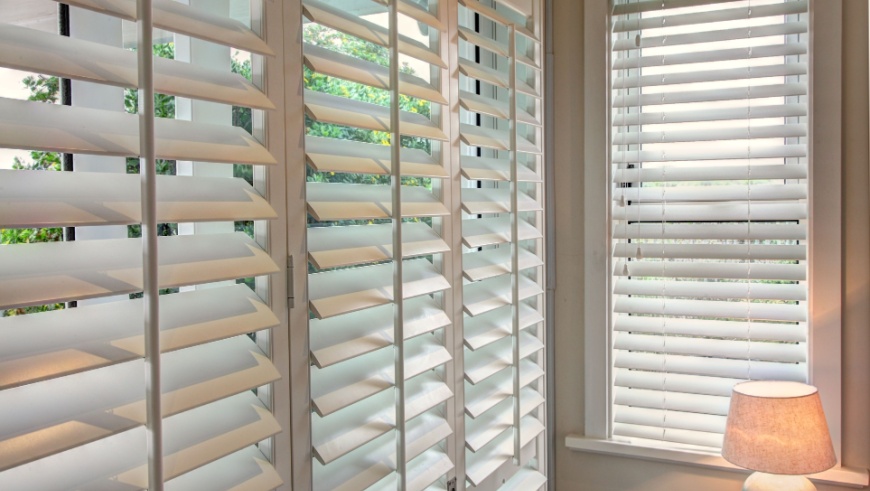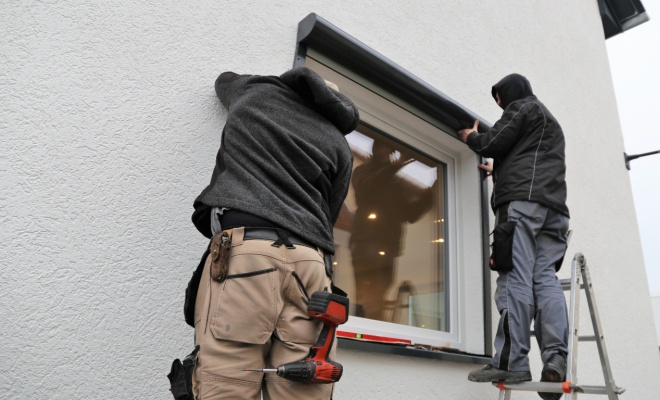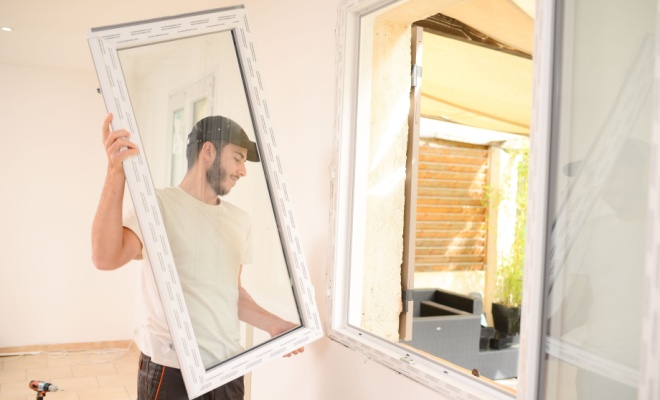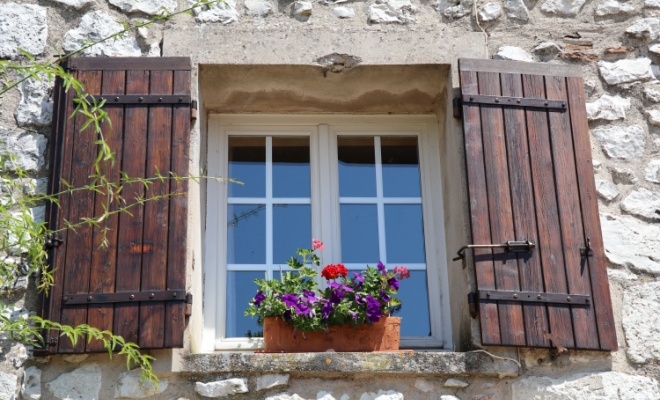Window Shutter Installation Cost
Last updated 24th July, 2025
Introducing window shutters in your home can be transformative. From adding functional privacy-bearing benefits to sophisticated aesthetics, window shutters are becoming an increasingly popular option for homeowners.
So, how much do shutters cost?
The average cost for window shutter installation is around £260 to £280 per m²
In this article, we’ll answer that and look at the different materials, wood, vinyl, and aluminium, as well as the different shutter styles, plantation, solid, and café style, to help you find the best match for your needs.
Let’s get into it.

Table of Contents
- How much do window shutters cost?
- Window shutter installation prices
- Additional window shutter installation costs
- Labour cost of window shutters
- Type of window shutters
- How to install window shutters
- DIY window shutter installation
- Compliance and regulations
- Finding and hiring a window shutter installer
- FAQs
How Much Do Window Shutters Cost?
The average cost for window shutter installation is around £260 to £280 per m². This means that, roughly, the average cost of shutters for a 3 bedroom house is between £2,500 and £5,000.
While window shutters are known for their high initial cost, they do potentially have a good return on investment. They can act as appealing features to future buyers, which may help boost your property’s value due to their bespoke nature.
Window shutters can also benefit your home’s insulation, helping to keep the warm air in when it's cold outside.
There are nuances to window shutter costs, however, depending on a few factors:
Interior vs Exterior Window Shutters
Whether your window shutters are internal or external will affect the price you’ll pay for their supply and installation. For instance, interior plantation shutters cost between £180 to £320 per m², while exterior shutters can be anywhere from £170 to £380 per m².
Window Shutter Material
The more premium the material, the higher the price–UPVC is the most affordable option, while composite and luxury natural woods can be more expensive.
Bespoke vs Off-the-shelf Window Shutter Sizes
As you’d expect, you’ll pay more for bespoke, custom-made sizes than you would off-the-shelf sizes. Bay windows are particularly common when it comes to commanding high prices, as they usually feature large drops and vast widths that aren’t usually catered for with regular off-the-shelf sizes.
The extra work involved in creating the larger, bespoke sizes will translate into higher prices for your supply and installation. Due to their size and scale, the larger the shutters, the more likely you’ll need professional fitting.
Number of Windows/Number of Window Shutters
You’ve guessed it–the more windows you have in your home, the higher your window shutter supply and installation costs will be. As with all home renovation projects, the more vast the scope, the higher the price is likely to be.
Similar to the last point, if you have a particularly large window expanse and need bespoke sizes created for most, if not all, of your windows, expect your prices to be far higher than those in smaller properties with more standardised window sizes.
Now that we’ve identified the influencing factors, let’s examine some sample window shutter installation prices.
Window Shutter Installation Prices
Here are some representative cost estimates for various styles of interior and exterior window shutters:
| Type of Shutter | Total Estimated Cost |
|---|---|
| Plantation shutter (supply and installation) | £180 to £320 per m² |
| Wood shutter (supply and installation) | £50 to £300 per m² |
| Bay window shutter (supply and installation) | £360 to £720 per m² |
| Garage roller shutter (supply and installation) | £600 to £4,000 |
| Shutter cost only (supply) | £150 to £300 per m² |
Plantation shutters are popular choices due to their timeless style and aesthetic. For supply and installation, you’ll be looking at costs between £180 to £320 per m², depending on the material you choose. Wood shutters can be fairly cost-effective depending on the wood, starting at £50 and rising to £300 per m².

Bay windows are tricky to install due to their size and configuration and usually cost around £360 to £720 per m² due to often requiring bespoke sizes with custom made shutters
.Looking at external shutters, garage roller shutters vary greatly in cost, from £600 to £4,000 for supply and installation. This can depend on the exact materials and functionality, with automatic and smart shutters priced at the higher end.
Let’s now take a look at some specific shutter styles and their associated supply costs:
| Type of Shutter | Supply Cost Only |
|---|---|
| Full-height shutter | From £210 per m² |
| Tier-on-tier shutter | From £210 per m² |
| Café-style shutter | From £210 per m² |
| Solid shutter | From £225 per m² |
Full-height, tier-on-tier, and café-style shutters all have the same starting supply only cost of £210 per m², while solid shutters are slightly more expensive at £224 per m² due to the increase in materials used.
Window Shutter Cost Breakdown Calculator
The total cost for supply and installation of window shutters in an average 3 bedroom house: £2,500
Supply
£2,000
Labour
£500
Waste Removal
£0
Additional Window Shutter Installation Costs
There are a range of additional costs that might crop up while you’re arranging for your window shutter project. Let’s take a look at a few of them so you’re clued up when the time comes:
Window Repair
If your windows are letting in moisture or have a constant build-up of condensation, it could be down to wear and tear on the frames or damage to the glass. Common issues, such as a replacing a blown window can cost anywhere between £100 and £850.
If this is the case, it's a worthwhile investment or your newly installed window shutters could soon be affected by damp and become covered in mould.
Window Glazing
Again, sticking with the windows themselves, it could be a time to upgrade your glazing. Adding secondary glazing to existing windows will cost, on average, £345 per window.
In contrast, you can also double-glaze a whole house for around £4,000 to £5,000 depending on the materials used for the frames, along with the size and location of the property (and of course how many windows).
Replacement Windows
You might want to consider the state of your actual windows in general before having window shutters installed. If they’ve seen better days or you simply wish to upgrade, then installing replacement windows before continuing with new shutters is a logical step.
Depending on the size of your windows and the volume you need to change in your home, costs can range from £4,000 to £5,000 for an average semi-detached house (based on eight windows, two doors), or around £200 to £400 per UPVC casement window.

Labour Cost of Window Shutters
If you buy your window shutters from a company that offers both the manufacture and installation of shutters, your labour costs are likely to be rolled into your total estimated cost. However, if you are unsure about this, make sure you check in with your chosen company to ensure this is the case, as unexpected costs when it comes to settling up are never wanted.
Timeframes vary depending on the size of your property, the number of windows and shutters, and the size of the window recesses. Also, the type of shutter you choose will affect how long the installation takes, as some may come ready-made (such as solid window shutters), whereas others might need individual installation.
The accessibility of your windows is also something to consider when determining labour timeframes. If your windows are particularly high, vast, or at hard-to-reach locations (such as over large staircases, for example), the labour charges are likely to be higher than those for easy-to-reach windows with standard sizes.
You can expect to pay between £150 and £300 for window shutter installation, which can take anywhere from a few hours to a full day or more for more complex installations.
Type of Window Shutters
There are many types of window shutters to choose from!

Let’s take a closer look at some of the key advantages and disadvantages associated with the different styles of window shutters:
Full-Height Shutter
Pros
- ✔ One single unit from top to bottom
- ✔ Covers the entire window
- ✔ Offers great privacy
Cons
- ✖ Only operates as one solid unit
- ✖ Less flexibility than other shutter designs
Tier-on-Tier Shutter
Pros
- ✔ Upper and lower sections can be opened independently
- ✔ Great flexibility
- ✔ Can let light in while maintaining privacy
Cons
- ✖ More expensive than full-height shutters
- ✖ Extra mechanisms involved
Café-Style Shutter
Pros
- ✔ Installed on the lower half of the window
- ✔ Provides privacy while letting in upper light
Cons
- ✖ Only offers privacy to the bottom half
- ✖ Top of window is left exposed
Solid Shutter
Pros
- ✔ Solid sections from top to bottom
- ✔ Acts much like solid curtains
Cons
- ✖ Limited light control
- ✖ Operates as an all-or-nothing panel